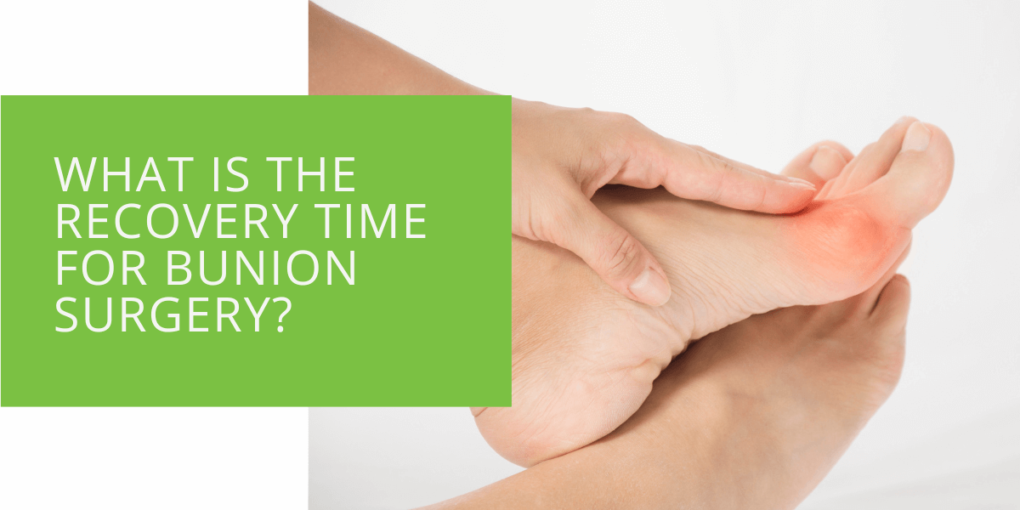What Is the Recovery Time for Bunion Surgery?
Bunion surgery, also referred to as bunionectomy or bunion removal, is a common procedure to correct the big toe joint deformity caused by bunions. While it relieves the pain and discomfort associated with bunions, understanding the recovery process is crucial for patients embarking on this journey.
Bunions, often characterized by a bony bump at the base of the big toe, can cause significant discomfort and affect mobility. When conservative treatments fail to provide relief, bunion surgery becomes a viable option to correct the underlying structural issues and alleviate symptoms.
Key Takeaways
- Minimally invasive bunion surgery typically offers a faster recovery compared to traditional open surgery, thanks to smaller incisions and reduced tissue trauma.
- The surgeon's expertise and individual healing processes significantly influence the recovery duration after bunion surgery.
- Patients should follow post-operative care instructions diligently, attend scheduled follow-up appointments, and engage in rehabilitation exercises to support long-term recovery and prevent bunion recurrence.
Factors Affecting Bunion Surgery Recovery Time
The duration of recovery after bunion surgery can vary depending on several factors. These include:
Impact of Surgery Type: Minimally Invasive vs. Traditional Foot Surgery
- Minimally Invasive Bunion Surgery: This innovative approach involves smaller incisions and specialized tools to correct the bunion deformity. The reduced tissue trauma typically translates to a shorter recovery period, allowing patients to return to their daily activities sooner.
- Traditional Foot Surgery: In contrast, traditional open bunion surgery entails larger incisions and more extensive tissue manipulation to realign the bones of the big toe joint. While effective for severe or complex cases, this approach may require longer recovery.
Role of Surgeon Expertise
The expertise and skill of the surgeon performing the procedure play a pivotal role in the recovery process. A highly trained and experienced surgeon can minimize complications and optimize outcomes, contributing to a smoother and faster recovery for the patient.
Individual Healing Processes
Each patient's body responds differently to surgery, influencing the speed and efficiency of the recovery process. Age, overall health, and adherence to post-operative care instructions can significantly impact the recovery timeline.
Types of Bunion Surgery and Their Recovery Times
Bunion surgery encompasses various techniques tailored to address the specific needs of individual patients. Here's a closer look at common bunion surgery procedures and their associated recovery times:
Minimally Invasive Bunion Surgery
Minimally invasive bunion surgery, also known as keyhole bunion surgery, represents a modern approach to bunion correction. By utilizing small incisions and specialized instruments, surgeons can realign the bones of the big toe joint with minimal disruption to surrounding tissues. Consequently, patients often experience a swifter recovery compared to traditional open surgery.
Open Bunion Surgery
Open bunion surgery, characterized by larger incisions and more extensive tissue dissection, remains a viable option for severe or complex bunions. Although this approach may entail a longer recovery period, it is essential for addressing underlying deformities and achieving optimal outcomes in challenging cases.

Bunion Surgery Recovery Timeline
Understanding the timeline of bunion surgery recovery is essential for patients to set realistic expectations and navigate the healing process effectively:
Immediate Post-Surgery Period
- First Few Days: Following surgery, patients may experience pain, swelling, and discomfort in the operated foot. Elevating the foot, applying ice packs, and taking prescribed pain medications can help manage these symptoms.
- One to Two Weeks: During this initial phase of recovery, patients are advised to limit weight-bearing activities and use assistive devices such as crutches or walkers to minimize stress on the foot.
Weeks After Surgery
- Two to Six Weeks: Patients can gradually increase weight-bearing on the operated foot as the incision heals and swelling subsides. Physical therapy exercises may be prescribed to enhance mobility and strength. However, strenuous activities and certain types of footwear may still be restricted to prevent complications.
Long-Term Recovery
- Six Weeks and Beyond By the six-week mark, many patients can transition to wearing regular footwear and engaging in light activities. However, full recovery and return to pre-surgery levels of activity may take several months, with ongoing monitoring by the surgeon to ensure optimal healing and prevent bunion recurrence.
Risks and Complications Associated with Bunion Surgery
While bunion surgery is generally safe and effective, it has risks. Potential complications may include:
- Infection at the incision site
- Nerve damage leading to numbness or tingling
- Recurrence of the bunion deformity
- Delayed wound healing or poor scar formation
Life After Bunion Surgery: Long-Term Recovery
Following bunion surgery, patients are encouraged to adhere to post-operative instructions and adopt healthy habits to support long-term recovery:
- Attend all scheduled follow-up appointments with the surgeon for monitoring and assessment.
- Perform prescribed rehabilitation exercises to restore strength, flexibility, and function to the foot and toe.
- Choose supportive footwear with ample room for the toes and avoid high heels or narrow-toed shoes that could contribute to bunion recurrence.
Conclusion
At ePodiatrists, we recognize the significance of bunion surgery recovery and are committed to providing comprehensive care and support to our patients every step of the way. Our experienced foot and ankle surgeons leverage advanced techniques and personalized treatment plans to optimize outcomes and minimize downtime. If you're considering bunion surgery or have recently undergone the procedure, we're here to guide you on your path to pain-free mobility and improved quality of life. Contact us today to schedule an appointment and take the first step toward a healthier, happier you.

